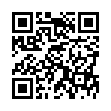Mysteriously Moving Margins in Word
In Microsoft Word 2008 (and older versions), if you put your cursor in a paragraph and then move a tab or indent marker in the ruler, the change applies to just that paragraph. If your markers are closely spaced, you may have trouble grabbing the right one, and inadvertently work with tabs when you want to work with indents, or vice-versa. The solution is to hover your mouse over the marker until a yellow tooltip confirms which element you're about to drag.
I recently came to appreciate the importance of waiting for those tooltips: a document mysteriously reset its margins several times while I was under deadline pressure, causing a variety of problems. After several hours of puzzlement, I had my "doh!" moment: I had been dragging a margin marker when I thought I was dragging an indent marker.
When it comes to moving markers in the Word ruler, the moral of the story is always to hover, read, and only then drag.
Written by
Tonya Engst
Recent TidBITS Talk Discussions
- Alternatives to MobileMe for syncing calendars between iPad/Mac (1 message)
- Free anti-virus for the Mac (20 messages)
- iTunes 10 syncing iPod Touch 4.1 (2 messages)
- Thoughts about Ping (16 messages)
Published in TidBITS 122.
Subscribe to our weekly email edition.
- CE Updates
- Inspiration Corroboration
- Virex Corrected
- StyleWriter Update
- Tune-Up Rationale
- CompuBigotry
- In Search of Stickybear
Berkeley Announces Winners
[Speaking of an entertaining and often stunning use for computers... -Adam]
Berkeley Systems, Inc., has just announced the winners of its 1992 After Dark Display Contest. The company, publishers of the modular After Dark screen saver utility, selected ten winning screen saver modules out of over 150 entries received.
The winner of the $10,000 grand prize was Ed Hall, who wrote an After Dark module called "DOS Shell," which simulates a DOS computer booting up and executing DOS commands to display the contents of the user's hard disk. No doubt Insignia Solutions, publisher of the DOS emulation software SoftPC, won't get the joke! I wonder if it simulates lots of mistyped syntax errors too?
The Macintosh Programmer category winner was "The Artist," a module by Jeff Kowalski and Bob Covey of Alameda, CA, that displays a PICT graphic and then redraws it using simulated artist's tools such as a fine brush, felt pen, and charcoal. Second and third place prizes went to Jean Tantra for "Patchwork," which creates patchwork patterns on the screen, and Wade Riddick for "Renoir," which allows users to create a wide variety of displays using a mathematical interface.
Winners in the Windows Programmer category were Jeff Falkner, for "Logrus," which maps chaos; Wes Cherry, for "Guts," which spins desktop icons and other shapes around a "magnetic" center; and John Hunt, for "Papillon," which sends butterflies fluttering across the screen.
The new Computer Artist category, which was not included in earlier contests, was topped by Frank Huyett and Mario Margherio, who created "Berk," an animated character whose face is made up of the contents of the Windows desktop contorted to fit the shape of a human head. Second place went to CirQoQuirko, a surrealistic (and damnably difficult to type) circus scene modeled in Macromind Director by Steve Lyons. Last but certainly not least came Randy Bowman and Ellen von Reiser with their Director loop entitled "Revenge of the Penguins," starring lots of penguins enjoying themselves on Antarctic ice floes, with one curious penguin approaching the screen to knock on the inside glass. I'm sure Adam can't wait for that one.
Some of these modules, and some released by Berkeley in its "More After Dark" collection of modules, seem to have missed the point of a screen saver utility, as they don't protect the screen from burn-in so much as entertain the computer's user and passersby. However, we must admit that the entertainment value isn't entirely unimportant!
One deserving entry that happens not to have won the contest, but, we feel, meets the criteria of protection and entertainment, is Kablooie, by Ithaca programmers Adam Miller and Jakub Buchowski. This module creates an inspiring and colorful fireworks display on the screen, complete with realistic, digitized explosion sounds. One of the inventive aspects of this module is that the module itself is modular. Users may create their own fireworks using ResEdit, specifying such attributes as sparkliness, size, longevity, how many "children" fireworks will be generated when the firework explodes, what else happens when the firework explodes, and how much effect gravity will have on this particular type of firework. Kablooie is available from your favorite purveyor of shareware and freeware software as well as from Ithaca's Memory Alpha BBS at 607/257-5822.
Of course, there are tons of other excellent shareware or freeware modules out there as well - a current favorite is bgMon from Joshua Golub. bgMon displays an EEG-style display that represents how much work the CPU is doing. It's amazing how much the Mac does when you're not using it.
Berkeley Systems says that these contest winners and other notable modules are likely to be released in an upcoming collection that will supplement More After Dark for those users who just can't get enough protection for their computer screens.
Information from:
Berkeley Systems, Inc. -- 510/540-5535
Jakub Buchowski -- Jakub_Buchowski@baka.ithaca.ny.us
 READERS LIKE YOU! Support TidBITS with a contribution today!
READERS LIKE YOU! Support TidBITS with a contribution today!<http://www.tidbits.com/about/support/contributors.html>
Special thanks this week to John & Nichola Collins, Chris Williams,
John K. Lilley, and Honeymoons By Sunset for their generous support!


